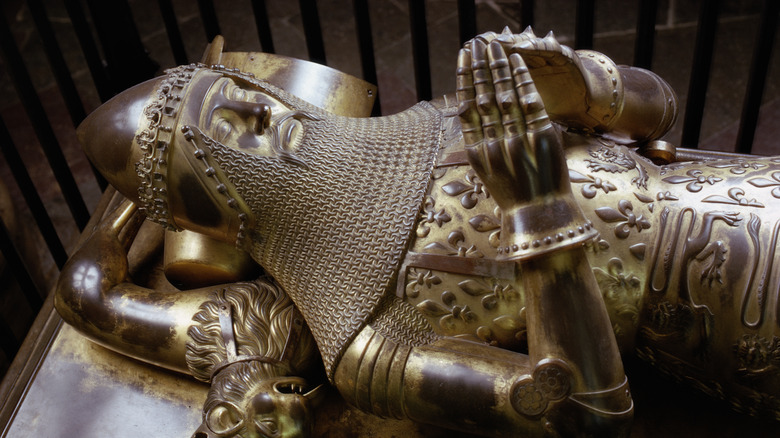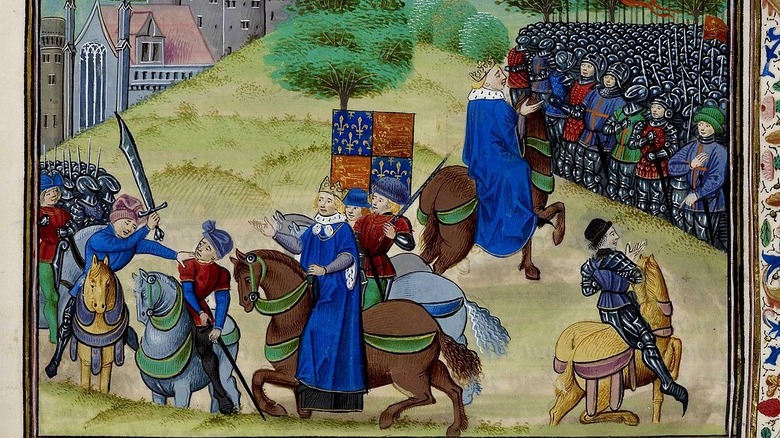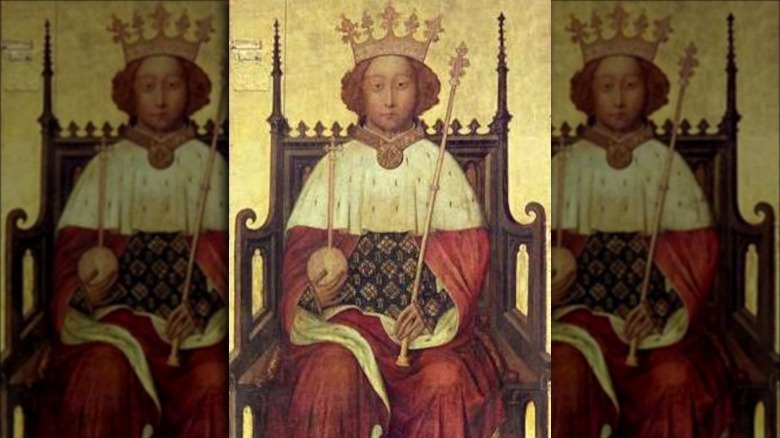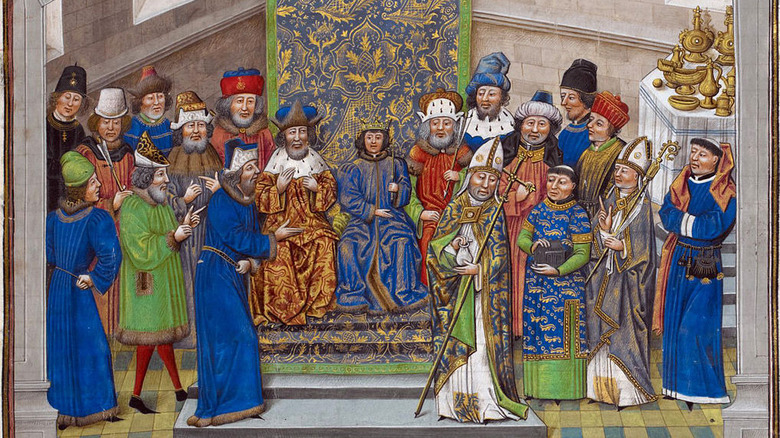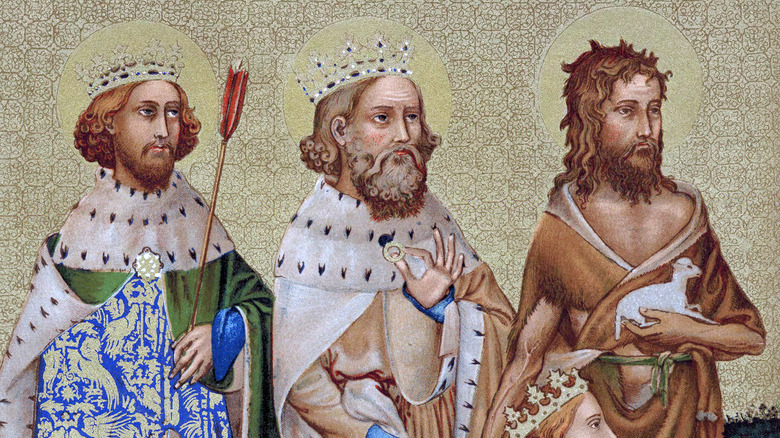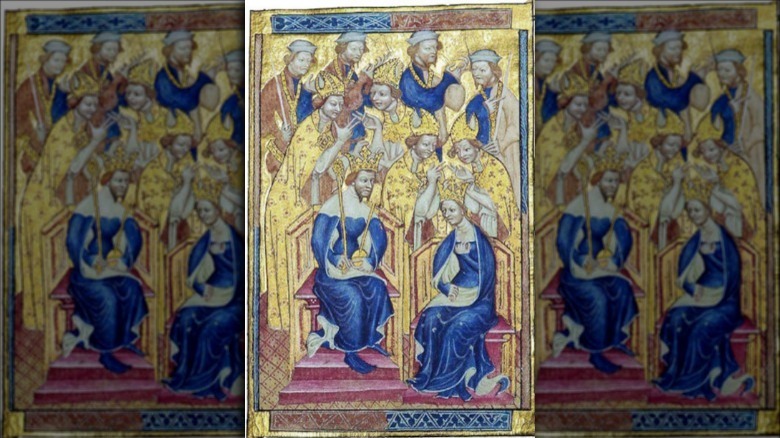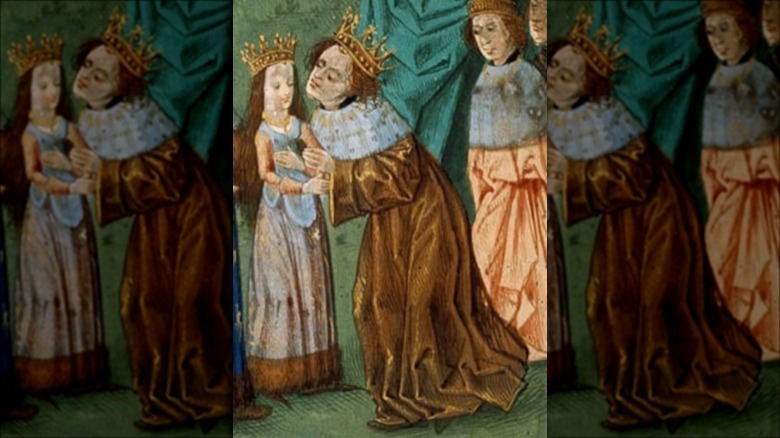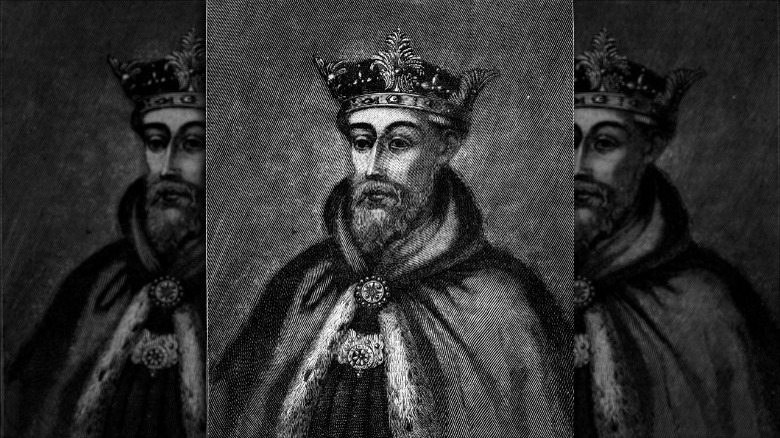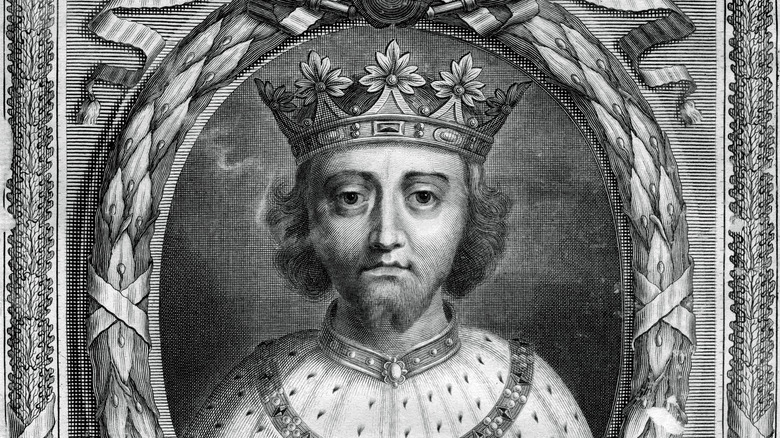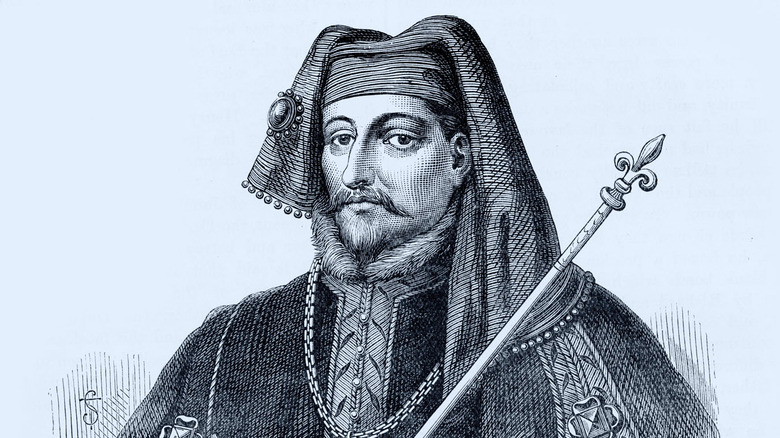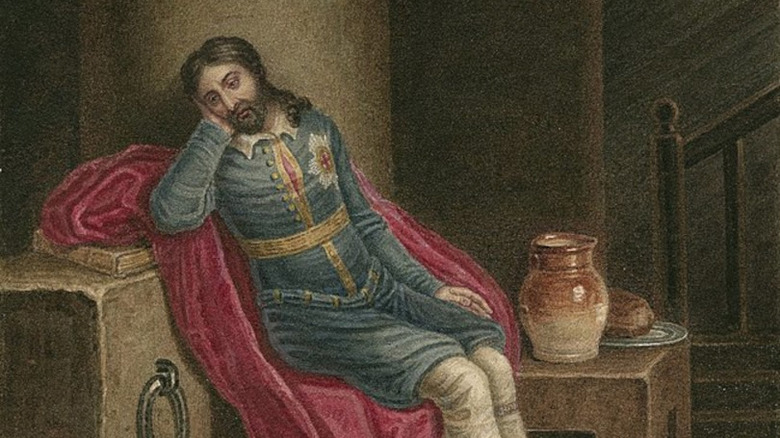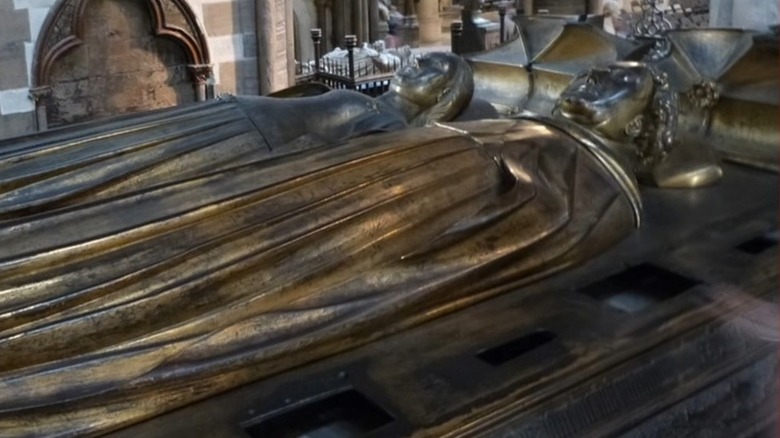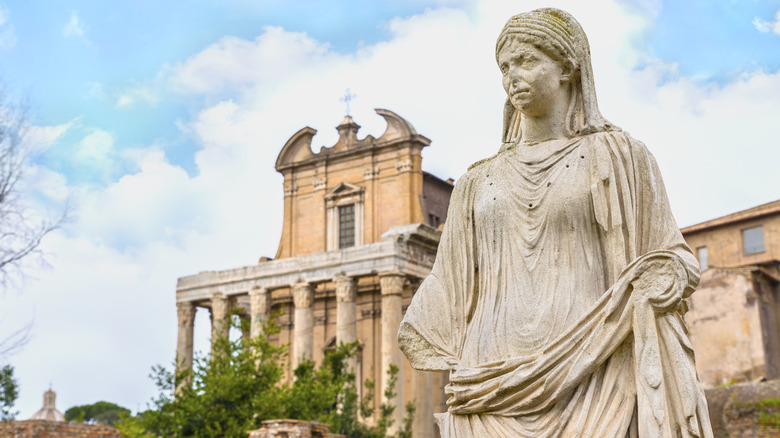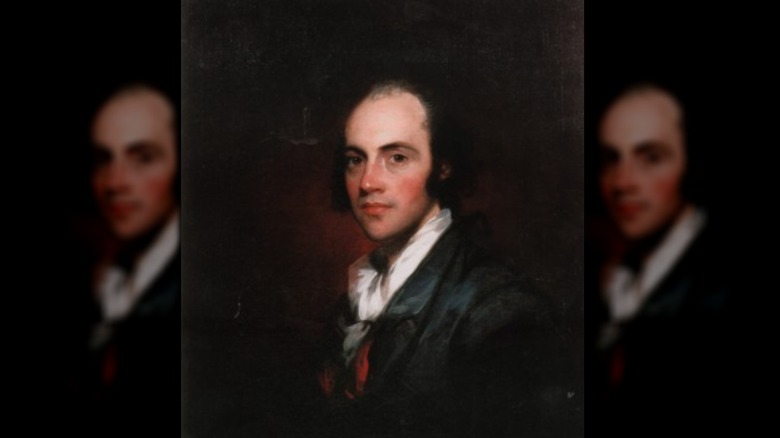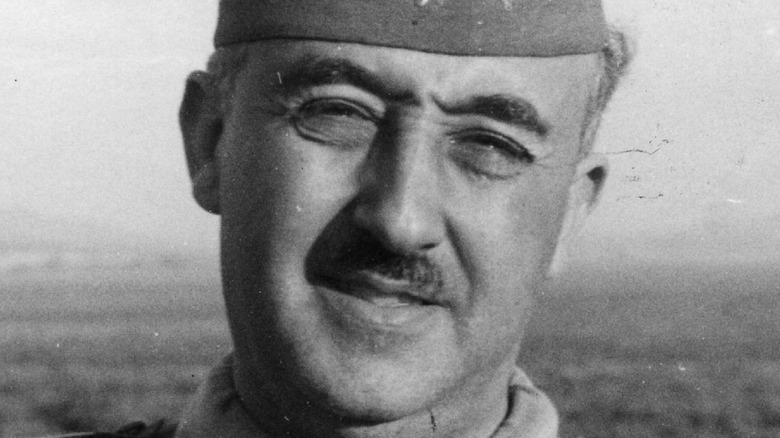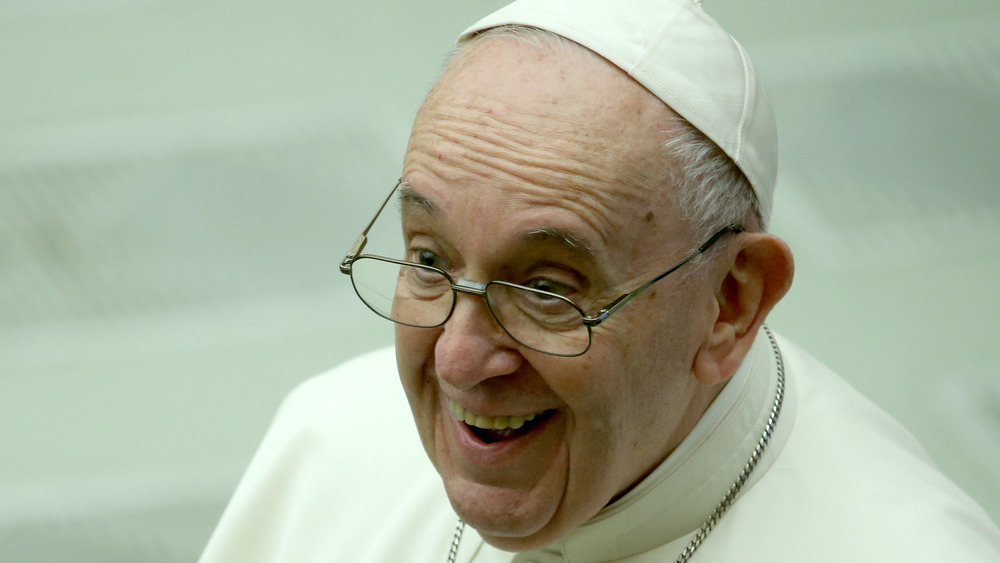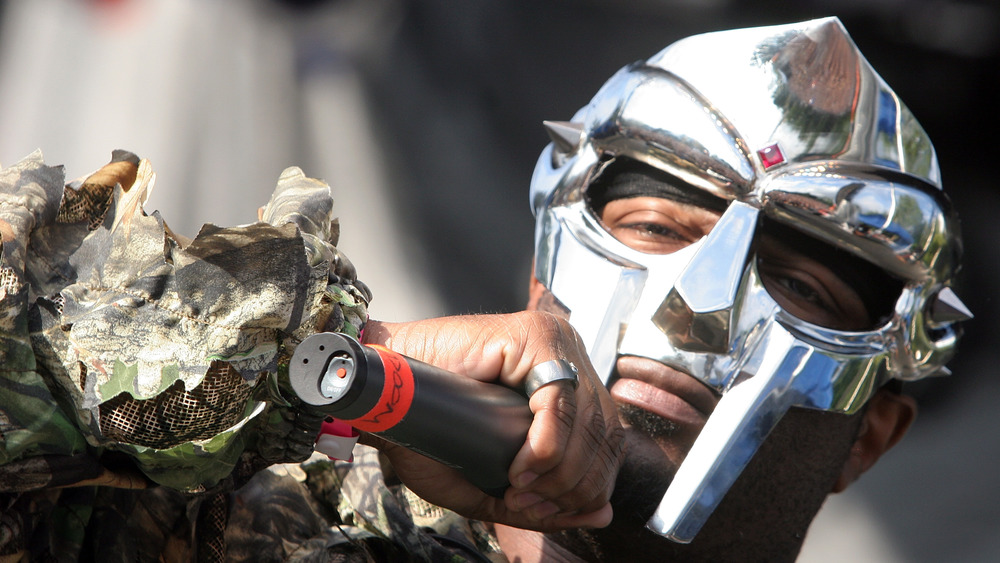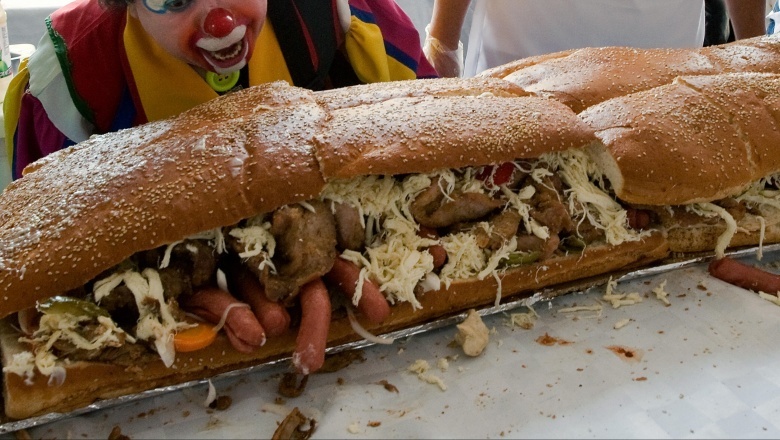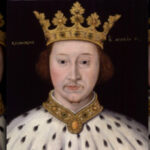
The Tragic True Story Of Richard II Of England
The English monarchy is the gift that keeps on giving. Whatever genre of entertainment you prefer, there’s at least one king or queen of England whose story will directly massage your pleasure centers. The story of the men and women who have ruled England offers tragedy and comedy, romance and adventure, military glory and political skullduggery.
And sometimes, all of those things at once. Such is the case with Richard II, simultaneously one of the most famous English monarchs (thanks in large part to his star treatment by William Shakespeare) and one of the least well-known. But 600 years ago, Richard II packed a lot into his 33 years of life and two decades of rule. Richard’s tumultuous rule took place during a time of historic change in England and the world in general, but his reign managed to be even more chaotic and doomed than conditions on the ground would have warranted.
In other words, Richard II should have been a great king, but instead he’s remembered as a disaster whose legacy includes a prolonged aristocratic civil war and destabilizing policies. Handsome, intelligent, and energetic, Richard II somehow left his country worse off than when he ascended the throne. Here’s the tragic true story of Richard II of England.
Richard became king after losing everyone
Richard II ascended to the English throne in 1377, when he was just 10 years old. As explained by The Creative Historian, he was never meant to be king—his father, Edward the Black Prince, should have inherited the throne when Edward III died. If the Black Prince died, his firstborn son, Edward of Angouleme, should have become king.
But as noted by English Monarchs, Richard’s older brother died of the plague when Richard was just a few years old. His father the Black Prince was already ill, suffering from dysentery, and he asked the king to designate Richard as his heir, which Edward III agreed to do. The Black Prince died shortly afterward, and when his grandfather the king died, Richard was all alone. As noted by Ancient Origins, Parliament was worried that Richard’s extremely unpopular uncle John, the Duke of Lancaster, would become king, so they made certain Richard took the throne.
Richard was by all accounts an intelligent and sensitive boy, but he was still a child suddenly thrust onto the throne of a troubled country. According to Britannica, Richard inherited an England that his father and grandfather had built into a military power. But it was also a country mired in a costly war that lasted so long it’s commonly referred to as the Hundred Year’s War, and a country devastated by the Black Plague.
Richard II had to face an immediate rebellion
Richard II became King of England when he was just a kid, and he inherited a country embroiled in massive change beyond anyone’s control. As noted by BBC History, England had suffered huge population losses as the result of the Black Death. Simultaneously, Richard’s predecessor, Edward III, had pushed England into a seemingly endless war with France—a war that cost England immense amounts of money. In order to pay those bills, brutal taxes had been imposed on the people of England even as the loss of population drove their wages up—and gave them increased power. With so few workers available, individuals discovered they had influence their ancestors had never dreamed of.
As explained by Britannica, Richard II had almost no time to learn the ropes as king. When he was just 14, these conditions resulted in the Peasants’ Revolt. This was the greatest threat to the power of the English crown in history. The rebellion was so successful Richard was forced to meet with its leader, Wat Tyler, and offer huge concessions. When the mayor of London murdered Tyler at one of these meetings, things looked incredibly bad for Richard—but the young king had the presence of mind to go out to the rebels and remind them that he was their king, and simply ordered them to disperse—which they did.
He was vain and sensitive
Richard II is the earliest king of England to leave behind reliable images of himself—we know more or less what Richard actually looked like. As explained by BBC History, this is because Richard worked hard to make the crown something more than the warrior chieftains of the past. He wanted to project the concept of monarchical power and the divine right of kings through what might be considered one of the earliest public relations campaigns in history.
But as Britannica notes, this went beyond political expediency. Richard was a self-conscious and vain man who was very likely a narcissist. He was fastidious—the first king to use a spoon and a handkerchief. Richard was a sharp contrast to his father and grandfather, men who had spent most of their lives on horseback fighting wars. His vanity was also problematic because Richard believed in a radically different sort of monarchy.
Richard saw the monarchy as a burden from God—but this also meant he’d been chosen by God to lead, and therefore had a divine right to do. So Richard believed that all power and honor stemmed from him personally. This put him in constant conflict with Parliament, which saw itself as an equal instrument of authority—and a check on the king’s power. These conflicts made Richard extremely unpopular.
Richard II chose his friends poorly
It’s probably impossible for normal folks in the modern age to understand what it was like for a 10-year-old boy to suddenly find himself the king of England. One thing that seems certain is that Richard II combined both incredible vanity with some very poor choices in terms of friends and advisers.
As noted by BBC History, Richard was naïve and surrounded himself with flatterers and sycophants. Britannica details Richard’s belief in a monarchy backed by God himself, where all power and honor flows from the king’s person. Richard gathered around himself men who supported these theories—and who were in turn unsurprisingly unpopular. This led to constant conflict between the king and Parliament, which demanded the removal of Richard’s favorites, leading to bitter and sometimes deadly political battles.
As English Monarchs notes, a contemporary description by a monk noted that he often preferred the advice of his young circle of favorites over the more experienced people in the government. Richard surrounded himself with people who supported his vision of the monarchy as being absolute, with nothing less than total obedience due to him from his subjects. This essentially set up Richard and his inner circle and Parliament as enemy groups fighting over control of the country—which ended badly for Richard.
Richard II tried to elevate the monarchy
Richard II had a very clear idea of his authority as king. As noted by historian Simon Walker, while Richard never wrote out any sort of manifesto, many believed Richard’s actions as king point to a belief in what would later be termed the “divine right” of kings. This concept of an absolute monarchy matches up with Richard’s intolerance for any sort of opposition to his will.
It also matches up with Richard’s quest to make being king more fancy. Both his father, the Black Prince, and his grandfather, King Edward III, had been classic warrior kings. Richard had a different vision of kingship. As noted by BBC History, Richard was probably the first English ruler to use a spoon, and may have actually invented the pocket handkerchief. Like we said: Fancy.
Richard also tried to make being king a more dignified and awe-inspiring position. Britannica notes that he introduced the terms “your majesty” and “you highness” into court proceedings, as opposed to the traditional and more practical “my lord.” He also increased the ceremonial aspects of being king, seizing any opportunity to show up in public in fancy robes, holding the symbols of his authority, in an attempt to demonstrate the divinity of kingship. It actually kind of worked—when he invaded Ireland in 1394, the Irish were so impressed they submitted to his authority without much resistance.
His beloved wife died young
Like many kings, Richard II wasn’t allowed to marry simply out of love—political considerations had to be taken into account. According to Ancient Origins, his first wife, Anne of Bohemia, was chosen because she was the daughter of the Holy Roman Emperor. An alliance between England and the Empire was desirable due to England’s endless war with France.
As noted by Trivium Publishing, Richard and Anne got lucky—they liked each other almost from the beginning. Anne was initially distrusted by the people of England as a foreigner (a not uncommon fate for queens imported from outside the country at the time), but she won over popular opinion with regular displays of charity, humility, and dedication to her role, eventually earning the nickname “Good Queen Anne.” Even more remarkable, Richard and Anne’s relationship grew stronger and more loving as time went on. Although the couple never had children, one rare sign of Richard’s devotion is the fact that he is not known to have fathered any illegitimate children, hinting at the level of affection he had towards his wife.
Sadly, after 12 years of happy marriage Anne died in 1394 of the plague. Richard was inconsolable. He reportedly had the house where she died razed to the ground, and built an elaborate tomb for his wife—with room for him, specifying that when he died he wished to be buried next to her.
His second wife was a child
Like every childless monarch in history, after his first wife died, Richard wasn’t allowed to remain single for very long. A king without a wife was a political opportunity too great to pass up, and a king without an heir was a recipe for chaos. So, as noted by Ancient Origins, just two years after his beloved Anne died Richard was married again—to a child who was just six years old.
One of Richard’s policy goals was to end the so-called Hundred Years’ War with France—not so much out of pacifism, but as BBC History points out because he was tired of having to beg Parliament for grants of money all the time to pay for it. Isabella of Valois was the daughter of King Charles VI of France, and Richard’s marriage to her was designed to seal a peace treaty with the country.
Richard and Isabella were by all accounts quite fond of each other. But it was a little creepy, as Trivium Publishing notes, because Richard tended to treat her like the daughter he and his first wife had never had. This despite the fact that if Richard had lived a few more years he would have been expected to consummate his marriage to Isabella.
Richard II was humiliated
Having come to the crown at the age of 10, Richard II wasn’t really in charge of England for most of his early reign. As BBC History explains, parliament set up a regency council to advise the young king, which in practice meant they ruled the country in his name. Britannica notes that after the Peasants’ Revolt of 1381 Richard began to assert his independence more and more. This turned out to be a bad thing.
Richard made several huge mistakes. First, he put his trust in a small number of young friends who he placed in positions of power. These friends feared and despised his powerful uncle, John of Gaunt, and even tried to have him assassinated. Meanwhile, Richard named his friend Michael de la Pole chancellor despite the fact that the nobility despised him. As a result, Richard’s relationship with the powerful families in his kingdom soured. Second, when a group of these nobles called the Lords Appellant pushed de la Pole out and charged him with crimes, as noted by Ancient Origins, Richard tried to use military force to impose his will.
It went badly. So badly, in fact, that Richard came close to being deposed in 1387 after a decisive military defeat in battle, and was forced to submit to the Lords Appellant. It was a humiliating defeat for a man convinced of his divine right to rule.
Richard II may have suffered from a mental disorder
Despite some very important advantages (he inherited a secure throne, he was by all accounts smart, handsome, and conscientious), Richard II’s reign could be fairly described as “disastrous.” Considering how much trouble Richard caused himself, it’s not surprising that a lot of historians wonder if Richard suffered from an undiagnosed mental disorder.
Historian Nigel Saul, for example, believes that Richard may have suffered from narcissistic personality disorder, noting how Richard’s actions were always very public, revealing a craving for recognition. Richard was also very focused on himself in how he viewed his kingdom—if he felt secure, the kingdom was deemed secure. English Monarchs notes that historian Anthony Steel concluded that Richard suffered from schizophrenia.
While there’s no way to know for sure, a mental disorder would explain many of Richard’s decisions. In the last years of his reign he was easily triggered by any sign of opposition to his authority, and he displayed an obsession with his personal authority and security that led to reckless decisions. As noted by BBC History, when Richard regained full control of England in 1397, he launched a period of bloody revenge and tyranny. His enemies were arrested, executed, and tortured while he began to demonstrate signs of paranoia, always traveling accompanied by a large bodyguard.
He became so unpopular he was deposed
The final years of Richard II’s reign set all new records for a king’s personal unpopularity. First, as noted by Britannica, Richard took bloody revenge on everyone in England who had ever sought to limit his authority. He arrested and executed powerful people, which did nothing good for his approval ratings. According to BBC History, his public image took another nosedive when he used a quarrel between two of his long-term enemies, Thomas Mowbray and Henry Bolingbroke, to exile both from the kingdom—and seize Bolingbroke’s assets. Considering Bolingbroke was probably the richest man in England at the time, this was extremely alarming to all the other rich people. Considering that Henry Bolingbroke ended life as King Henry IV, you might guess how this worked out for Richard.
According to BBC History, Richard seemed to be firmly in control of the kingdom—he had plenty of money, and his recent bloody purges had left his favorites in charge of the government. But the reality was that Richard was so unpopular that Bolingbroke was able to easily raise just about the entire country in rebellion against him. As History Hit notes, Richard made the mistake of sailing to casually invade Ireland, allowing Bolingbroke to land in England and rapidly gather support and soldiers. Strangely, Richard didn’t hurry home to shore up his authority and meet Bolingbroke in battle—he lingered in Ireland. By the time he went home, any trace of support was gone.
Richard II was starved to death
In 1399, Henry Bolingbroke—who had seen his lands seized and been exiled by Richard—returned to England and raised an army in rebellion against the unpopular king. In Just a few months, Henry had the support of the entire country, and Richard was forced to surrender in August. BBC History notes that before he did so, he asked for assurances that his position as king would be respected. Bolingbroke agreed—Richard would be in custody, but he would remain king.
There was a brief attempt by some loyalists to rescue Richard, but by and large he went into confinement in the Tower of London without making any trouble. Britannica details what happened next: Bolingbroke didn’t delay—he summoned parliament in September 1399 and had articles of deposition drawn up. Powerless, Richard was forced to abdicate. He was taken to a castle at Pontefract where he was imprisoned again, and in October Bolingbroke ascended to the throne as King Henry IV.
A few months later, there was an attempt to break Richard out and restore him to the throne. This made Henry realize that Richard—who was just 33 years old—would be a problem for decades to come. Richard was dead by February 1400. It was a slow, horrible death by starvation. No one made much of a fuss about the death of the former king.
Richard's legacy was civil war
Richard II’s legacy was never going to be particularly strong but considering his belief in his divine right to rule it was especially ironic. Put simply, the Wars of the Roses, a lengthy and bloody series of civil wars in England, wouldn’t have happened if Richard had been a marginally better king.
As History Hit explains, by 1399, Richard II had managed to make himself so unpopular no one put up much resistance when his cousin, Henry Bolingbroke of the House of Lancaster, raised an army to depose him and seize the throne. Bolingbroke easily had himself crowned as Henry IV. But as noted by History on the Net, there was one small problem: Henry wasn’t actually next in line to the throne. The next king should have been Edmund, Earl of March, part of the House of York.
Henry and his son, Henry V, were both strong authority figures and successful kings, so the fact that they were in the eyes of many totally illegitimate didn’t matter. But then Henry VI was a weak king who suffered from bouts of mental illness. History explains that Richard, Duke of York was named protector of the realm when Henry was indisposed. Richard was Edmund’s son—and therefore had a strong claim to the throne—and when Henry VI recovered, he refused to step down. Cue more than 30 years of Yorks fighting Lancasters for the throne which might never have happened if Richard II had a single friend.

The Reason Some People Thought The World Was Going To End In 1982
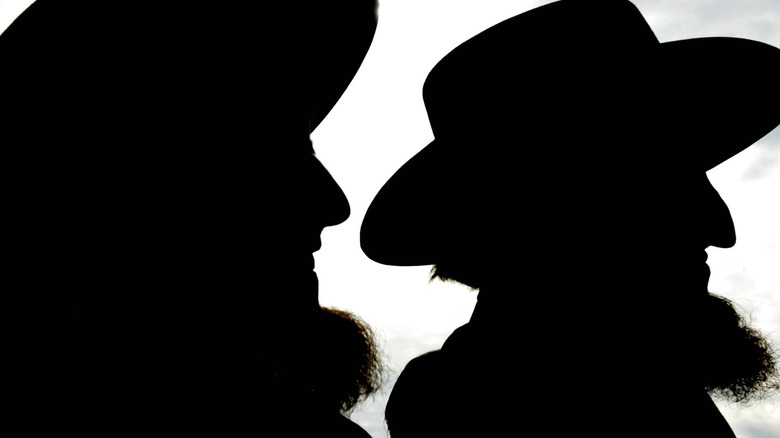
The Real Reason Amish Hold Religious Services In The Home
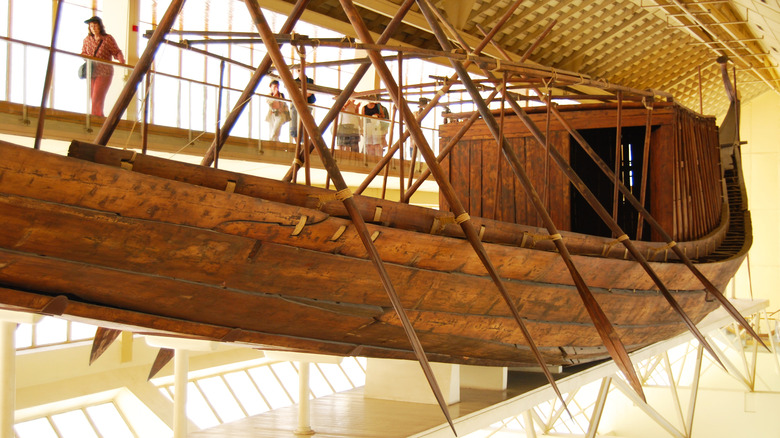
The Truth About King Khufu's Solar Boat
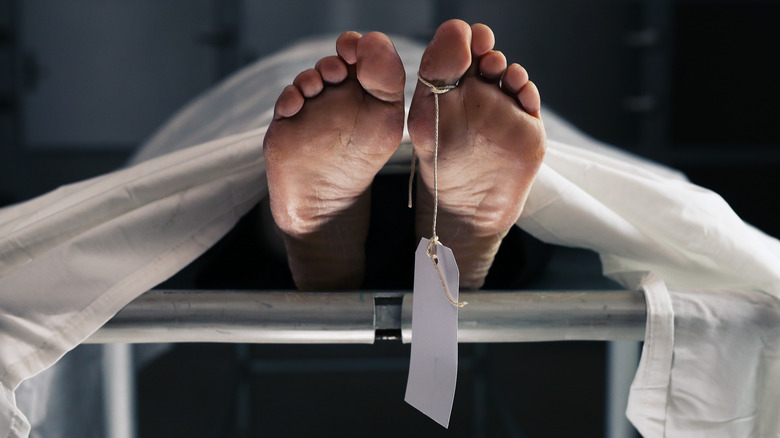
Disturbing Details Found In The Heaven's Gate Victims' Autopsy Reports
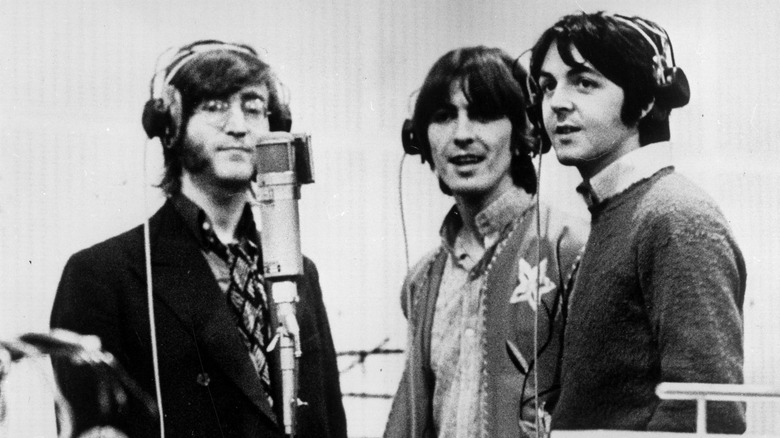
The Truth About The Hells Angels' Friendship With The Beatles
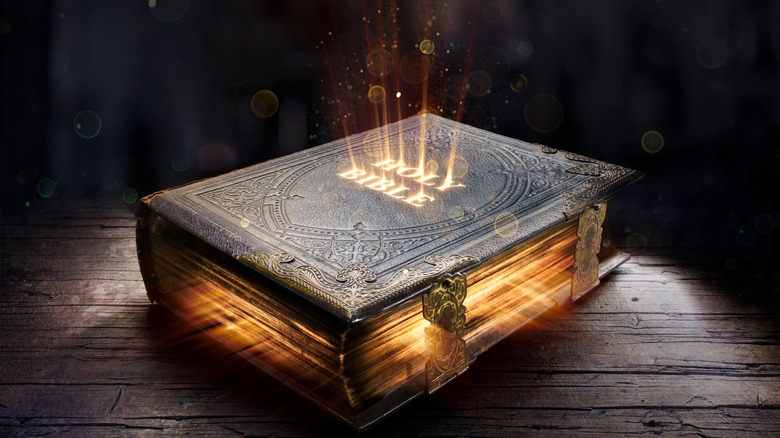
The Meaning Of The Number 3 In The Bible

Who Exactly Started The Stonewall Riots
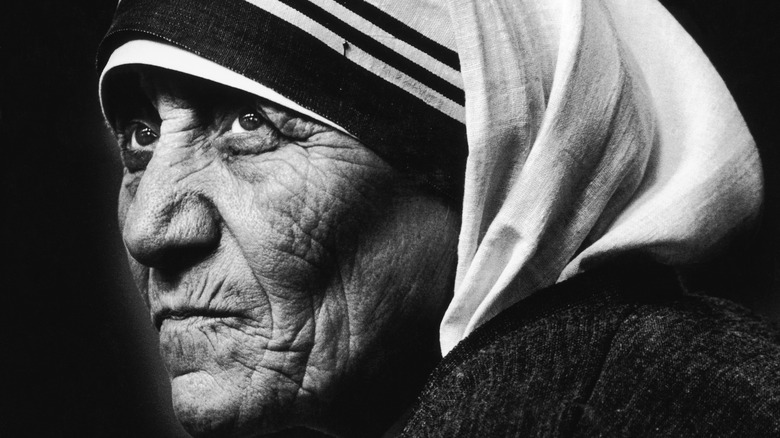
The Dark Truth Behind Mother Teresa's Exorcism
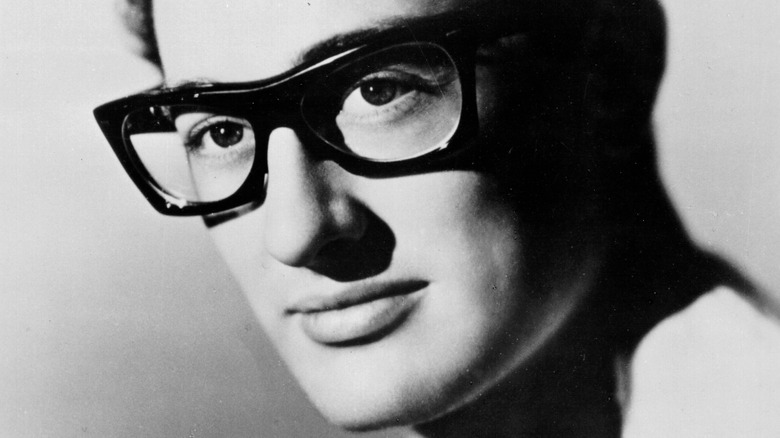
What Buddy Holly's Song Peggy Sue Was Originally Called

The Tragic Death Of Sally Ride
